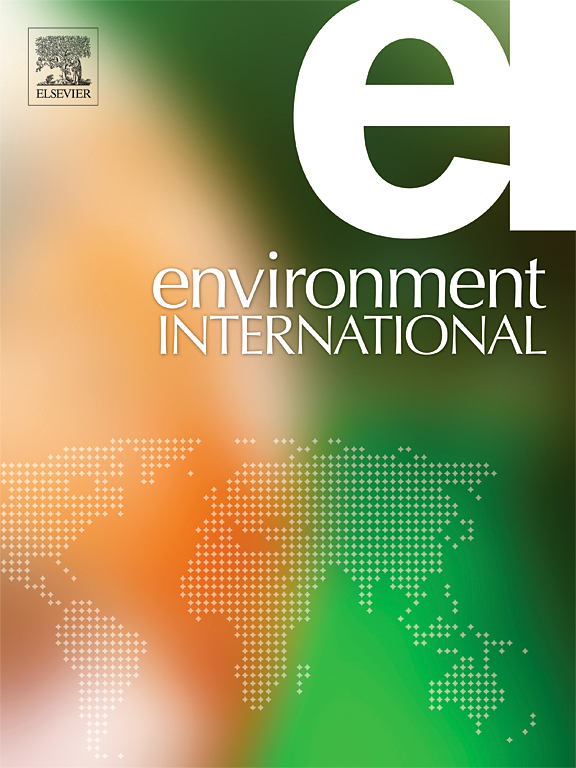Deciphering organic substrate impacts in Anammox systems: A machine learning driven framework for predictive classification and process mechanism analysis
IF 10.3
1区 环境科学与生态学
Q1 ENVIRONMENTAL SCIENCES
引用次数: 0
Abstract
The response mechanisms of anaerobic ammonium oxidation (Anammox) systems to organic compounds have been extensively characterized, yet the synergistic impacts of organic classification and concentration gradients remain debated due to inconsistencies in operation conditions and microbial cultivation environments. This study investigates the critical factors governing nitrogen removal efficiency in Anammox processes, with particular emphasis on the combined effects of influent organic concentration and organic matter characteristics. Three datasets were constructed based on organic types: biodegradable organic compounds, biorefractory organic compounds and combined two types organic compounds. Two machine learning models were employed to predict Anammox performance, with Random Forest (RF) identified as the optimal model, subsequently validated using real coking industry wastewater treatment data. SHapley Additive exPlanations (SHAP) analysis revealed differential regulatory dominance across systems: organic concentration, influent ammonium nitrogen () manifaested as the primary governing factors in biodegradable system, whereas organic type emerged as the most critical factors in biorefractory and combined systems. The results demonstrate that evaluating organic impacts solely through concentration levels is oversimplified, necessitating concurrent consideration of both organic type and concentration. Mechanistic interpretation through molecular-level inhibition analysis further validates the scientific rationale for employing Biochemical Oxygen Demand/Chemical oxygen demand (BOD/COD) ratio as a comprehensive indicator of carbon source effects on Anammox systems. In summary, machine learning framework effectively integrates and optimizes the regulation of material stoichiometry, environmental parameters, and microbial functionality, thereby advancing the development of energy-efficient nitrogen removal technologies and enhancing the evaluation system for wastewater treatment processes.
解读厌氧氨氧化系统中有机基质的影响:用于预测分类和过程机制分析的机器学习驱动框架
厌氧氨氧化(Anammox)系统对有机化合物的响应机制已经得到了广泛的表征,但由于操作条件和微生物培养环境的不一致,有机分类和浓度梯度的协同影响仍存在争议。本研究探讨了厌氧氨氧化过程中控制氮去除效率的关键因素,特别强调了进水有机物浓度和有机物特性的综合影响。基于有机类型构建了三个数据集:可生物降解有机化合物、生物难降解有机化合物和结合两类有机化合物。采用两种机器学习模型来预测Anammox的性能,其中随机森林(Random Forest, RF)被确定为最优模型,随后使用真实的焦化工业废水处理数据进行验证。SHapley加性解释(SHAP)分析揭示了不同系统间的差异调控优势:有机浓度、进水铵态氮(NH4+-NNH4+-N)是可生物降解系统的主要调控因素,而有机类型是生物难降解系统和复合系统中最关键的调控因素。结果表明,仅通过浓度水平来评价有机影响过于简单,需要同时考虑有机类型和浓度。通过分子水平抑制分析的机理解释进一步验证了采用生化需氧量/化学需氧量(BOD/COD)比作为碳源对厌氧氨氧化系统影响的综合指标的科学依据。综上所述,机器学习框架有效地整合和优化了材料化学计量学、环境参数和微生物功能的调控,从而推动了节能脱氮技术的发展,增强了废水处理过程的评价体系。
本文章由计算机程序翻译,如有差异,请以英文原文为准。
求助全文
约1分钟内获得全文
求助全文
来源期刊

Environment International
环境科学-环境科学
CiteScore
21.90
自引率
3.40%
发文量
734
审稿时长
2.8 months
期刊介绍:
Environmental Health publishes manuscripts focusing on critical aspects of environmental and occupational medicine, including studies in toxicology and epidemiology, to illuminate the human health implications of exposure to environmental hazards. The journal adopts an open-access model and practices open peer review.
It caters to scientists and practitioners across all environmental science domains, directly or indirectly impacting human health and well-being. With a commitment to enhancing the prevention of environmentally-related health risks, Environmental Health serves as a public health journal for the community and scientists engaged in matters of public health significance concerning the environment.
 求助内容:
求助内容: 应助结果提醒方式:
应助结果提醒方式:


